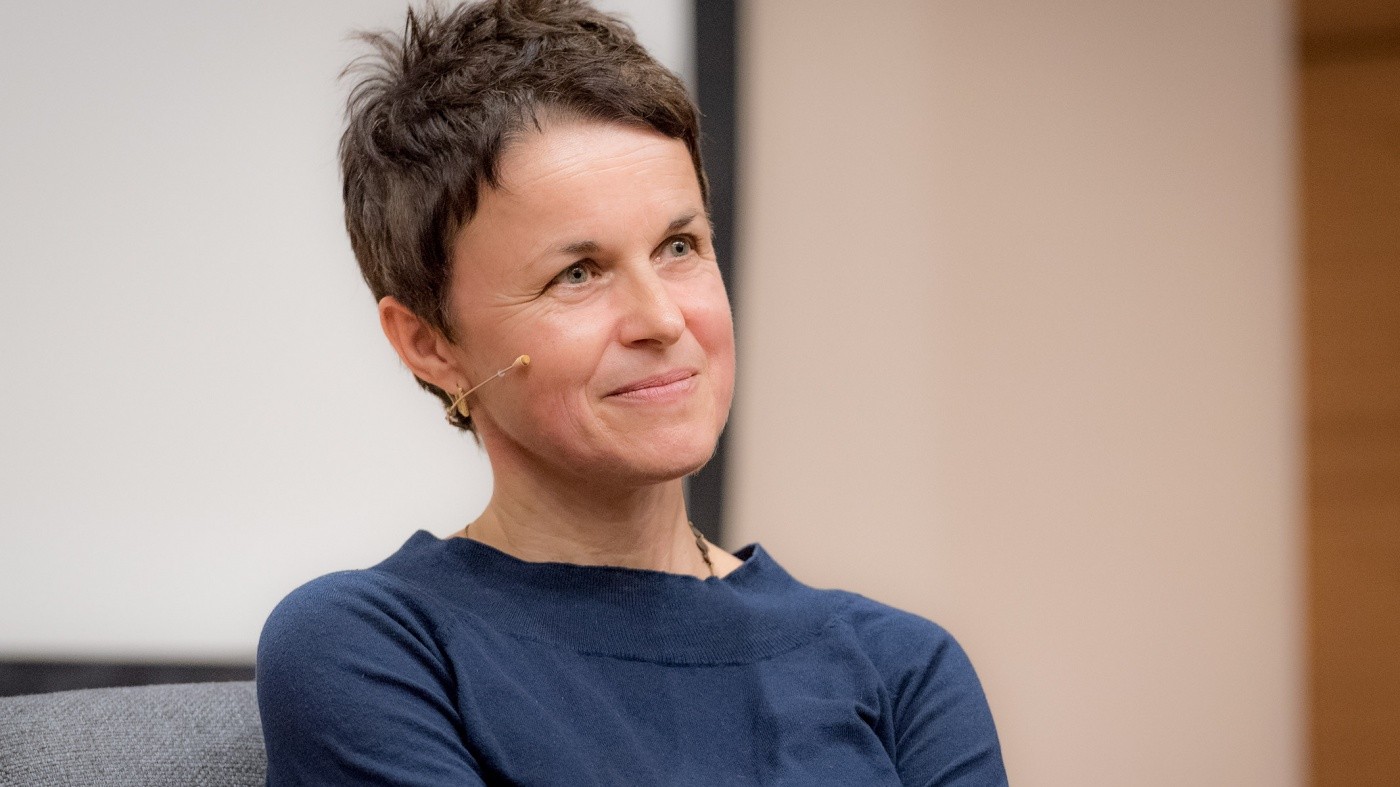Gladstone NOW: The Campaign Join Us on the Journey✕

Melanie Ott, MD, PhD, (pictured) and Krystal Fontaine, PhD, addressed questions about the different strains of Zika virus and their potential to spread to the United States. [Photo: Chris Goodfellow, Gladstone Institutes]
The World Health Organization recently declared an international public health emergency over the Zika virus, a mosquito-borne virus that emerged early last year in Brazil and has since spread rapidly throughout Latin America. Zika virus infections have more recently been reported in the United States, including Northern California; however, these infections have been travel-associated cases.
On February 11, infectious disease experts at the Gladstone Institutes held an informational briefing session on the Zika virus to explain what is known about the virus and how it might be combatted as infections rise across the globe.
“Much of what we know about Zika virus was described in the first few reports about the virus in 1952,” explained Melanie Ott, MD, PhD, a senior investigator at Gladstone, who led the briefing. “At Gladstone, we are working to advance these reports by studying the molecular virology of the Zika virus to understand how it enters cells and replicates.”
Most people who contract Zika virus may not realize that they have been affected: just 1 in 5 infected people experience even mild symptoms, such as rash, fever, and joint pain. While there are no treatments or cures for Zika virus infections, those infected will clear the virus within a few weeks of infection. Deaths are rare, mainly occurring in people who also suffer from immunosuppressive diseases.
The real danger is for pregnant woman, who can transfer the virus to their unborn babies. Zika virus infection has been linked to microcephaly in infants¾abnormally small heads and brains that did not develop properly in the uterus.
“The Zika virus is a neurotropic virus, which means that it likes to replicate in the brain,” said Ott. “In addition to microcephaly, infection with Zika virus in adults can lead to destruction of myelin, a mixture of proteins and fatty substances that insulate nerves to speed electrical communication between neurons, a condition called Guillain-Barre syndrome.”
The briefing was followed by a question and answer session with Ott and Krystal Fontaine, PhD, a postdoctoral scholar in Ott’s laboratory. They shared important information about how people can prevent Zika virus infections.
“In the United States, we have a much lower risk of widespread Zika virus infection, largely because of differences in mosquito population sizes and our lifestyles in which we have more limited contact with mosquitoes,” explained Fontaine. “A higher risk lies in individuals who may travel to areas where the Zika virus is actively spreading.”
Ott and Fontaine have been studying infectious diseases for over a decade, and they are now applying their knowledge of dengue virus, which is related to Zika virus, to determine how Zika virus infects cells and leads to disease. They hope to identify a potential therapeutic target for Zika virus.
“We live in a physically more-connected world that speeds the spread of various infectious agents,” said Warner Greene, MD, PhD, director of the Gladstone Institute of Virology and Immunology. “With the recent increase in federal funding to support research on the Zika virus, we are optimistic that we will be able to combat this epidemic swiftly.”
The event was live streamed on the Gladstone YouTube page and is is available for viewing at https://youtu.be/wgwyC4Br_eA.
40 Years of HIV Research: Celebrating the Career of Virologist Warner Greene
40 Years of HIV Research: Celebrating the Career of Virologist Warner Greene
Colleagues look back on Warner Greene's 40 year career
Gladstone Experts History HIV/AIDS Infectious Disease Greene LabTips from Virologists to Face the “Tripledemic” This Holiday Season
Tips from Virologists to Face the “Tripledemic” This Holiday Season
Gladstone scientists answer questions about the convergence of COVID-19, RSV, and the flu this winter
Gladstone Experts COVID-19 Infectious Disease Greene Lab Ott Lab Roan LabWhen Will This Pandemic End?
When Will This Pandemic End?
And other questions you have about Omicron and the pandemic
Gladstone Experts COVID-19 Infectious Disease Greene Lab Ott Lab Roan Lab



